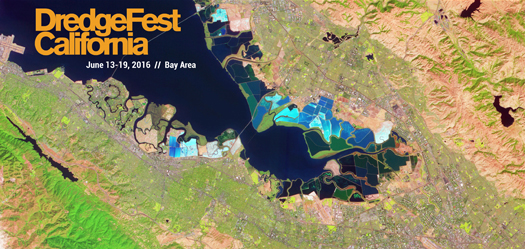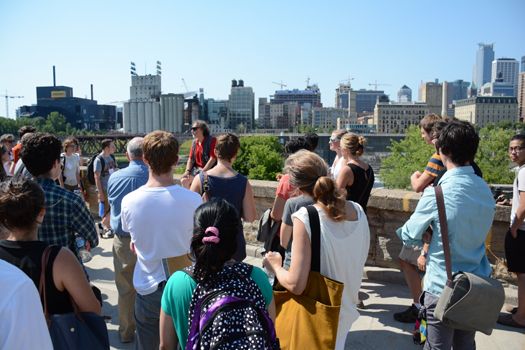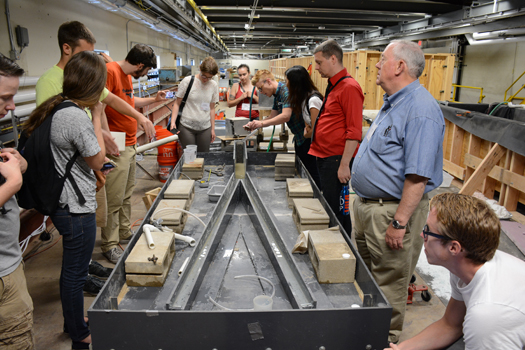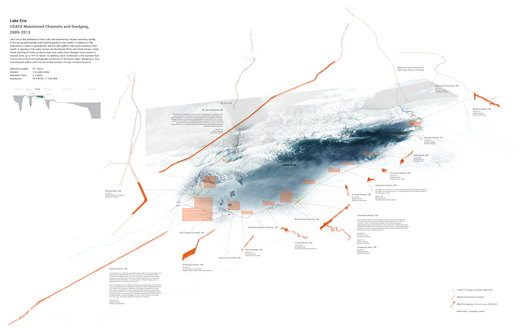
The Dredge Research Collaborative is inviting participants to apply for the workshops at our upcoming event, DredgeFest California.
We are seeking faculty, practicing designers, scientists, industry professionals, policymakers, regulators, junior scholars, advanced students, and other interested parties to join us in the Bay Area, June 13-19, 2016.


[Tours at DredgeFest Great Lakes, summer 2015.]
Sediment is critical to the present and future health of California’s estuarine Bay-Delta. It is the physical infrastructure that underlies its many ecologies and economies. As the 2015 State of the Estuary report notes, “Like fresh water, sediment is a precious resource that is essential for keeping the Estuary healthy”.
But the Bay-Delta currently has a shortage of this land making resource. Upriver dams have trapped sediment, while levees, bank armoring, and river straightening have cut off wetlands and floodplains while accelerating the movement of the remaining sediment, preventing it from building substrate. The Bay’s coastal wetlands, which are critical to sea-level rise adaptation, face an unprecedented deficit of sediment. Some of the Delta’s levees are now protecting “islands” so deeply subsided that they are much lower than adjacent waterways, stressing the levees — and with them local communities, ecologies, and the role of the Delta as conduit for southern California’s water supply. Sediment, including dredged material, is the primary material available to meet these challenges.
The workshop teams at DredgeFest California will collaborate to produce innovative design and landscape planning that will advance strategies for where that sediment can come from, how it can be delivered, and how it should be placed.

[Dredged navigational channels on Lake Erie; drawing by the Dredge Research Collaborative.]
The workshops will be divided into three tracks:
Bay Sediments
The Bay team will focus on design scenarios for bay and coastal management of sediment in the context of adaptation to accelerated sea-level rise, wetland restoration, maritime economies, the cultural landscape heritage of the Bay, and public waterfront access. It will demonstrate that sediment projects have the potential to not only satisfy immediate economic needs, like the provision of navigation through channel dredging, but also to create additional long-term value for the cultural, ecological, and economic contexts that they are embedded in.
Delta Earthworks
This team will propose innovate strategies for future earthworks and infrastructural retrofits in the Delta, informed by a set of scenarios described and spatially modeled by members of the Dredge Research Collaborative. Proposals will respond to the myriad uncertainties facing the Delta’s infrastructure, including water exports, climate change, regional urbanization, rapid ecological change, potentially disastrous earthquakes, and flood protection needs.
Regional Choreography
The choreography team will construct a set of scenarios that probe potential relationships between sediment sources and sediment deficits across the entire estuary watershed, while considering the potential effects of external drivers such as shifting regional weather patterns, long-term technological innovation, and state and national policy climates. Its work will both be informed by the Bay and Delta tracks and provide broader context for them.
Each track will work as a single multi-disciplinary team, facilitated by the DRC and augmented by lectures, discussions, and critiques with local and regional experts.
The (very brief) applications are due March 1, 2015. More details here.

